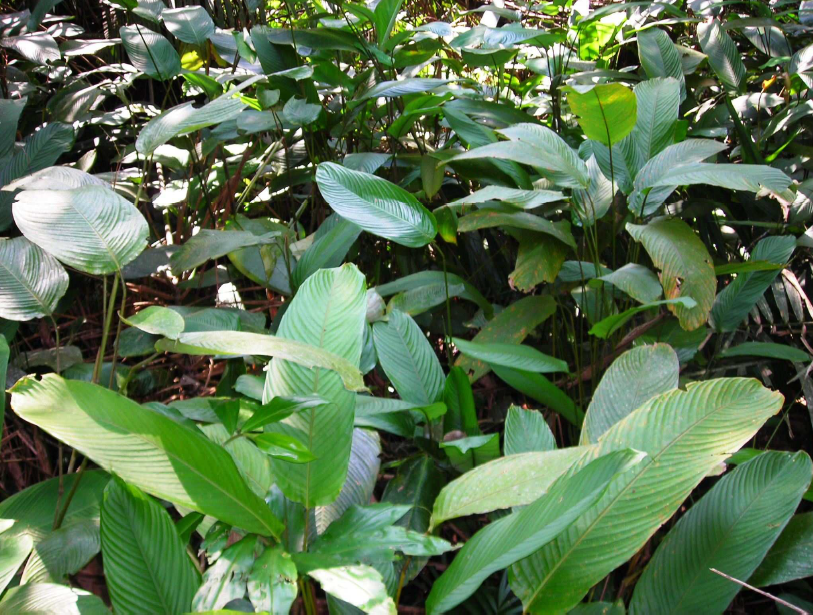This post was led by Jacob Willie
Assessing forest ages can be an important measure for management, yet while temperate forests are generally well studied in this regard tropical systems lack often this knowledge. One would think that simply measuring tree height will already provide a proper estimate, yet the level of uncertainty is particularly high in fast-growing tropical tree species, hence prohibiting reliable estimates to tease apart younger from older successional stages.
In a recent paper published in the African Journal of Ecology, Jacob and Luc teamed up with Nikki Tagg from the Royal Zoological Society of Antwerp to study the species composition of herbaceous vegetation in a wide range of tropical forest habitats in South-East Cameroon. These habitats include pristine and secondary forest types, swamps and light gaps, where herbaceous plants were identified and counted in 250 4-m² square plots. As you can imagine, obtaining reliable species identification is quite a challenge in tropical areas as they normally lack those comfortable and nicely illustrated identification guides. For this reason, the authors worked together with Fulbert Tadjouteu from the National Herbarium of Yaoundé in Cameroon who provided crucial input in identifying locally sampled plants with the herbarium collection.
All habitat types were characterized by a similar number of species. The majority of the herbaceous species grew in all habitat types and, as such, can be described as generalists. However, a few of these plant species grew only in certain habitat types. Overall results suggested that members of the families Poaceae and Araceae grew in the oldest forest patches, whereas Zingiberaceae grew in the youngest forest patches and Commelinaceae, Costaceae, Cyperaceae, and Marantaceae thrived in flooded habitats. The number of herbaceous plant species and the number of stems per square meter did not vary with the age of the forest because the scarcity of pioneer species in the oldest forest patches was counterbalanced by the presence of generalists and species that grew only in the oldest forest patches. However, due to the highest number of dwarf stems in the oldest forest patches, the height of herbaceous plant communities among forest patches varied.

Gorillas – who preferably feed in some of the investigated habitat types – did not affect the development of the herbaceous plant community, despite their otherwise selective diet. In conclusion, the herbaceous plant species composition complements traditional tree-based measures of forest stage description. As such the study provides relevant information on herbaceous plants as ecological indicators of tropical forests of various ages.
To learn more, check out the full paper:
Willie J., Tagg N. & Lens L. (2017): Diversity and community composition of herbaceous plants in different habitat types in south-east Cameroon. African Journal of Ecology doi:10.1111/aje.12454.
